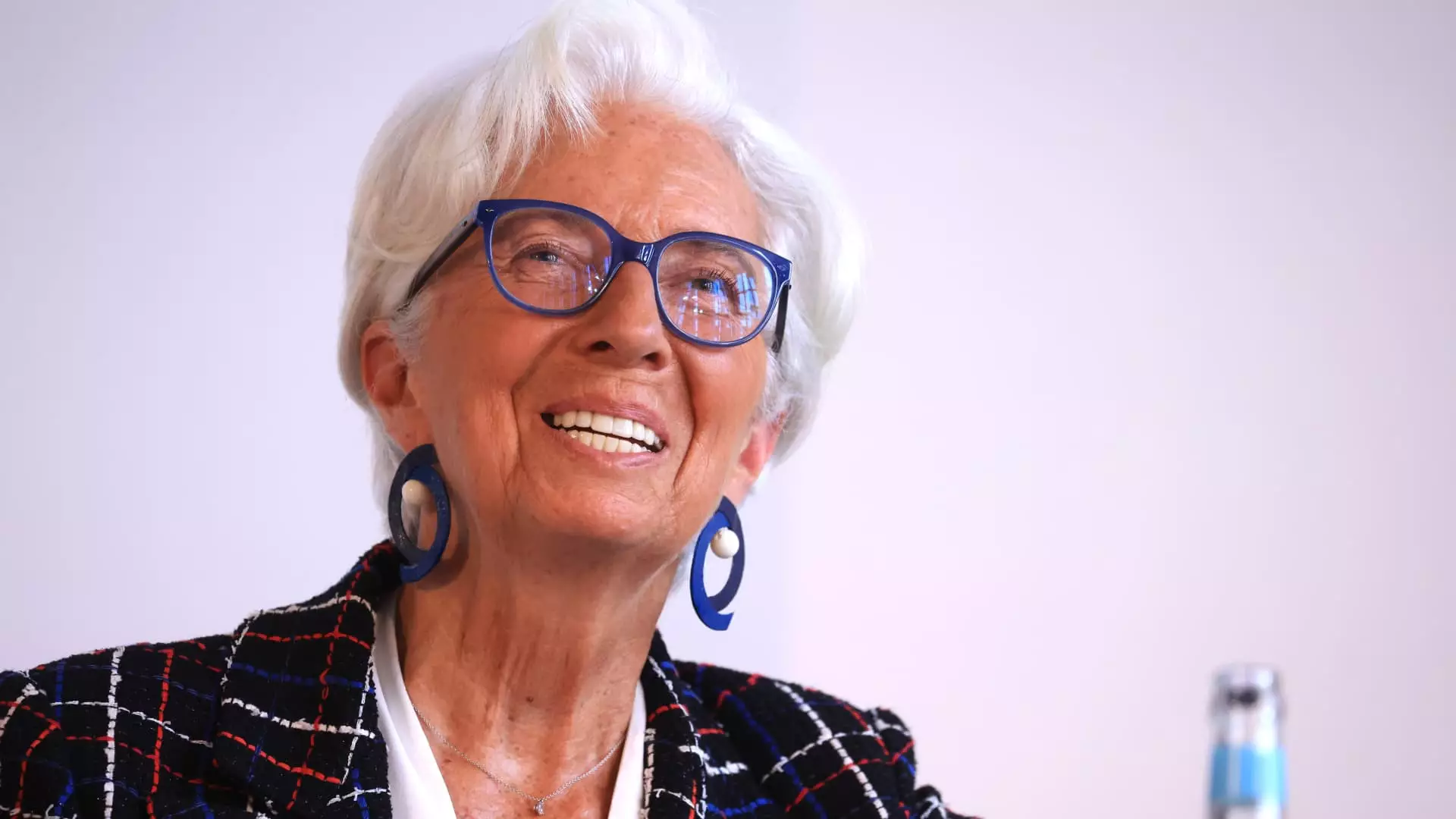The European Central Bank (ECB) recently made headlines by announcing a surprising 25-basis-point reduction in interest rates, lowering the deposit facility rate to 2%. This decision marked a significant decline from mid-2023’s peak of 4%. The backdrop to this cut is a complex interplay of factors, including a bolstered euro and dwindling energy prices. Such an adjustment signals the ECB’s response not only to current economic indicators but also to a broader assessment of the eurozone’s financial climate. With a notable 99% expectation of this cut already priced into the market by traders, it seems the ECB’s move was less about shock and more about responsiveness.
However, the ECB’s rationale delves deeper into the evolving narrative of inflation in Europe. The bank’s updated predictions suggest a downward trend in inflation, with expectations of stabilizing around 2% by 2025—down from an earlier estimate of 2.3%. This signals an interesting shift in the economic narrative; inflation in the eurozone finally dipped below the ECB’s target of 2% for the first time in a significant while, resting at 1.9% in May. The era of high inflation appears to be dissipating, much to the relief of policymakers and consumers alike.
The Disconnect of Economic Growth
Despite the positive movement in inflation rates, there is a disconcerting disconnect when it comes to actual economic growth. The latest figures show that growth in the eurozone was merely 0.3% in the first quarter of 2025, with predictions for the year remaining stagnant at 0.9%. This apathy in economic expansion is troubling. While interest rate cuts typically encourage borrowing and investment, the prevailing uncertainty bonds businesses into caution, especially amid geopolitical frictions and trade wars that threaten the stability of international commerce.
The ECB references worsening trade policies as a looming threat, particularly the implications of U.S. tariffs that target crucial European industries such as steel and automotive manufacturing. The potential retaliative measures by the European Union are merely on standby, yet their mere existence casts a pall over economic optimism. What’s alarming is that while rate cuts are intended to stimulate growth, they may inadvertently worsen conditions in certain sectors, leading to greater instability. Countries must challenge the normalcy of relying solely on monetary policy to spur growth when the nature of external economic relations is so frail.
Looking Ahead: Geopolitical Tensions and Defense Spending
The ongoing geopolitical tensions provide a murky backdrop to any economic forecast. The uncertainty surrounding trade policies cannot be overstated, especially with the ever-changing dynamics of the global landscape. Investment in defense and infrastructure projects framed as future growth drivers sounds good on paper, but in reality, it raises a multitude of questions about the sustainability and effectiveness of such initiatives. Will increased government spending in these areas truly act as a balm for the struggling eurozone economy, or is it a distraction from more profound structural issues?
There lies a sharp irony in relying on defense spending to bolster the economy. Resources that could arguably be better allocated to education, healthcare, or technology are siphoned off into military expenditures. It’s a short-term band-aid on deeper, systemic wounds and raises critical questions about priorities in both economic and ethical terms.
In a climate rife with uncertainty, it becomes clear that the ECB’s actions—while necessary—must be accompanied by broader strategies and innovations that genuinely foster stable, long-term growth. There’s an urgent need for collaboration among member states to pivot from a reactive stance to a proactive one in building a more resilient economic structure.
As the eurozone navigates these turbulent waters, it’s crucial to re-examine our methods of fostering economic vitality and not merely rely on monetary policy adjustments that may mask underlying issues rather than resolve them. The path forward will require not only judicious policy decisions but also a renewed commitment to addressing the very complexities of our globalized economy.

